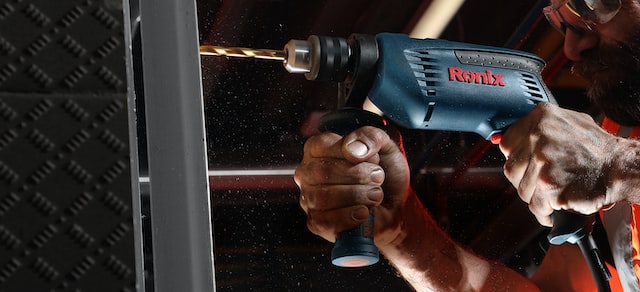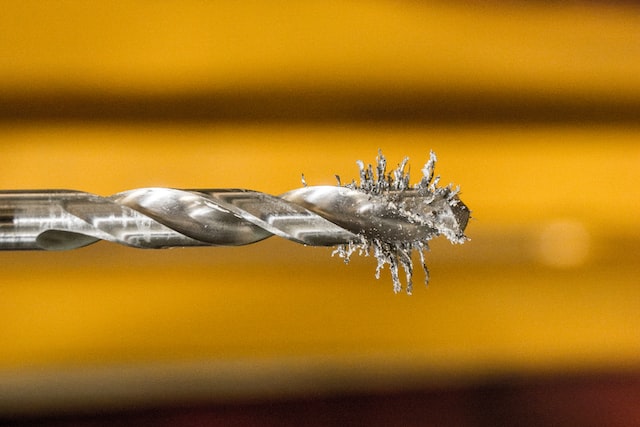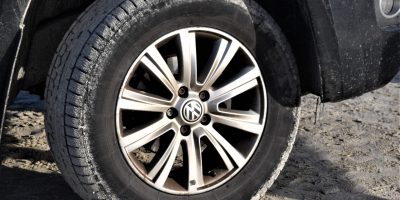Hey folks! Are you tired of wobbly and uneven holes when trying to drill straight into wood, metal, or any other material? Well, have no fear because drilling straight without a drill press is possible, and it’s easier than you think. In this blog, we’ll go over some tips and tricks to help you achieve professional-looking results every time. Whether you’re a DIY enthusiast or a seasoned woodworker, these techniques will come in handy for all your drilling needs. So grab your drill, tighten your grip, and let’s get started on making those straight holes!

Tips To Achieve Straight Holes
Many professional and do-it-yourself projects necessitate the ability to drill straight holes. The accuracy of your holes matters whether you’re working with wood, metal, or something else. DIY novices and even some professionals have trouble drilling perfectly straight holes. However, if you use the appropriate methods and equipment, you can drill holes that are perfectly straight and exact every time. The following are some pointers to get you going in the right direction:
🟦 It’s important to use the correct drill bit.
The quality of your holes is directly related to the drill bit you employ. The twist drill bit excels in drilling through metal, whereas the spade bit excels at the wood. Choose a drill bit that is appropriate for the material you’re drilling into, and check that it is the suitable size for the hole you intend to make.
🟦 The drilling site must be marked.
Mark the spot where you intend to drill the hole before you really begin drilling. The material can be punched with a center punch or pencil to create a small dimple. By doing so, you can avoid the problem of the drill bit slipping as you start to bore.
🟦 To hit directly in the middle, you should use a center punch.
By creating a dimple in the material using a center punch, the drill bit may be directed to the desired location. If you use a center punch, you can get your drill to start in the right spot and finish with a straight hole.
🟦 Strap the stuff down.
Clamping the material down tightly will keep it from sliding around while you drill. The material will remain in place and you may drill a straight hole, thanks to this clamp.
🟦 Make a gentle start.
When beginning a drill job, it’s best to take things slowly and build up the pace as you go. To avoid the drill bit slipping or becoming lost, do this rather than exerting your full force.
🟦 Don’t let the drill drift off-angle.
Always ensure that the drill is perpendicular to the surface of the material you are working on. A straight hole is easier to create if you follow these guidelines. Either a drill press or a square can be used to manually guide the drill in a perpendicular direction.
🟦 Set the drill to stop.
A drill stop is an accessory that can be attached to a drill bit to regulate the drilling depth. All of your holes will be more precise and uniform if you do this method.
The Proper Ways Of Drilling Straight Holes

The ability to drill holes straight through various materials is essential in a wide variety of commercial and do-it-yourself contexts. A straight hole is necessary for numerous fields, such as carpentry, welding, and building. In this section, we’ll take a close look at the methods and equipment needed to drill a straight hole.
Step 1: Find out how big a hole you’ll need.
To begin drilling a straight hole, one must first ascertain the required diameter and depth. Insights like these will be useful in selecting the appropriate drill bit for the task at hand. If the hole is going to be used to insert a screw, for instance, a countersink drill bit may be required. A regular twist drill bit would be adequate if the dowel is going to be inserted into the hole.
Step 2: Using a drill press.
Having decided on a drill bit, the next step is to get the workpiece ready. Making sure the material is firmly secured to the work surface and that the work surface itself is flat and level is an essential first step. Many different materials, including wood and metal, can have straight holes drilled into them with the help of a high-quality drill press. To guarantee that the hole is drilled precisely where and how deep it should be, use a drill press.
Center punching the intended hole’s spot before drilling is a must. The drill bit is less likely to slip and wander, reducing the risk of a misaligned hole. To prepare the surface for drilling, a center punch is used to generate a small indentation. As a result, the drill bit will always begin drilling from the precise starting point indicated by the indentation.
Step 3: Drilling.
Maintaining the straightness of the hole requires a regulated and steady drilling motion. To avoid damaging the material being drilled, the drill’s speed should be adjusted to match the material’s hardness, with lower speeds being required for harder materials like metal. Cutting oil or another type of lubricant should be used to help cool the drill bit and minimize friction, both of which can lead to the bit overheating and breaking.
Step 4: Burrs.
The hole should be cleaned of any burrs after drilling to ensure proper function. Small, pointy protrusions called burrs can form on the hole’s rim if the material being worked is metal or wood. Burrs like these should be smoothed down using a file or sandpaper before any screws or dowels are installed.
Without a drill press, drilling straight holes is a difficult task. But even without a power drill, you can make holes that are straight and precise by hand drilling. Read on for more info.
What Is A Drill Press?
A drill press is the wizard of the workshop, weaving its magic to create precise and accurate holes in metal, wood, and a variety of other materials. It’s a drill, mounted on a sturdy stand and powered to spin at high speeds, making it effortless for the user to create consistent holes with ease.
Think about trying to drill a hole through solid steel, or a thick piece of hardwood. It’s no easy feat. But with a drill press, even the most stubborn of materials can be transformed into a work of art, with perfect holes that are precise, accurate, and consistently uniform.
The drill press has a range of speed settings, making it easy to adapt to the task at hand, and its depth stop feature allows for complete control over the depth of each hole. Whether you’re a seasoned metalworker or a weekend woodworker, a drill press is an essential tool that will elevate your creations to the next level.
But is it possible to drill straight holes without a drill press? Let’s find out!
How To Drill Straight Holes Without Drill Press

This section covers straight-hole drilling without a drill press.
🟩 Center-punching
To drill a straight hole, mark the center first. Use a center punch. Center punches make it easier to position drill bits by indenting the surface.
Place a center punch on the surface you wish to drill and tap it gently with a hammer to create a drill bit alignment dimple.
🟩 Drill guide
Use a drill guide to drill straight holes without a drill press. Drill guides keep the drill bit aligned and prevent it from wandering.
There are several drill guides, but the idea is the same. The guide is fastened to the surface, and the drill bit is put into a sleeve that aligns and prevents straying.
🟩 Leveling
Use a level to drill straight holes without a center punch or drill guide. To achieve this, clamp the workpiece to a flat surface and level it.
Start drilling after leveling the workpiece. Use the level to make changes as you drill.
🟩 Vice
A vice can drill straight holes without a drill press. A basic vice holds the workpiece steady and aligned when drilling.
Clamp the workpiece in a vice and line the drill bit with the hole center. Then, drill away. The vice holds the workpiece, keeping the drill bit aligned.
Bonus: Different Types Of Drill
Drills are an indispensable tool for any do-it-yourselfer, carpenter, or mechanic. A drill is an essential tool for any job requiring the creation of holes, the driving of screws, or the mixing of paint. Yet, selecting the best drill for the job might be difficult due to the wide variety of options. Different drills serve different purposes, and we’ll examine those differences here.
🟫 Corded drills
Corded drills have been around for a very long time since they are the simplest sort of drill. DIYers who don’t need a lot of power but yet want a drill capable of light-duty activities like hanging pictures or drilling little holes in wood will find them to be a good option. Cheaper than cordless models, corded drills are best for anyone who doesn’t need the convenience and flexibility of a cordless drill.
🟫 Cordless
The popularity of cordless drills has skyrocketed in recent years due to their many uses. These drills are cordless and run on rechargeable batteries, making them extremely practical. The portability and convenience of cordless drills make them a must-have for do-it-yourselfers and contractors who are constantly on the move. Even though different brands of cordless drills have different battery life, most may work for several hours on a single charge.
🟫 Hammer drills
Hammer drills are powerful tools made for drilling into tough materials like stone, concrete, and brick. The hammering action of these drills helps to break up the material, making a hole in it much more manageable. When compared to their corded and cordless counterparts, hammer drills often have more power, but they are also bulkier and more expensive. A hammer drill is the tool of choice when penetrating tough materials.
🟫 Impact drivers
The use of impact drivers, a relatively recent type of drill, has seen explosive growth in popularity. Using these drills to drive screws and nuts into tough materials is a perfect example of the kind of heavy-duty work they’re built for. Drive screws into tough materials with ease using an impact driver’s combination of torque and a hammering motion. Impact drivers are widely favored by professionals and do-it-yourselfers because of their ability to outperform standard drills despite their smaller size and lighter weight.
🟫 Right-angle drills
Tight spaces and awkward angles are no match for right-angle drills. These drills include a special head that can be angled to 90 degrees, allowing you to access areas that would be impossible with a standard drill. Electricians, plumbers, and HVAC specialists can all benefit from using a right-angle drill, as can DIYers who need to drill into confined places in order to mount shelves, cabinets, or other fixtures.
Thoughts On Drilling Without A Drill Press: Is It Advisable?
Drilling is a crucial aspect of many DIY projects and woodworking endeavors, but the question remains: is drilling without a drill press advisable?
On the one hand, a drill press offers a level of precision and stability that a handheld drill simply cannot match. With a drill press, the drill bit is guided along a precise, vertical axis, ensuring that the holes are straight and uniform. Additionally, the drill press provides a level of safety and control that handheld drills lack, reducing the risk of accidents and mistakes.
However, this does not mean that drilling without a drill press is impossible or even necessarily unadvisable. With a little bit of patience and skill, you can still achieve excellent results using a handheld drill. It’s important to use proper techniques, such as marking the drill location and drilling slowly, to maintain control and accuracy. Furthermore, handheld drills are much more portable and versatile than drill presses, allowing you to take on projects on the go or in tight spaces where a drill press would not fit.
Final Words
Finally, drilling straight holes without a drill press is achievable with expertise and the correct instruments. With a few modifications and a drill guide, you can make holes nearly as accurate as a drill press.
Accuracy begins with a sharp, correctly sized drill bit. Using a center punch to indent your mark also keeps the drill bit on track. Drill slowly without a press because straight holes require steady hands and pace. If in doubt, buy a good drill guide.
These suggestions can help you make straight, clean holes every time. Good luck and happy drilling!


